Selecting a truly effective anti-wrinkle cream can be challenging, several brands on the internet use tricky advertising to fool you into thinking they’ll result in fast and noticeable results. However, this isn’t always the case.
We made sure to carefully review brands; we’ve investigated over 3000 different wrinkle creams that come from all over the world.
A Guide to Different Types of Anti-Aging Creams
Introduction
In 2006, archaeologists discovered beads made out of seashells at a dig site in Israel. They dated back over 100,000 years, and are our earliest example of human jewelry. A sewing needle found in a cave in South Africa dated back to 60,000 years – the earliest example of clothing. Through archaeological digs that go back tens of thousands of years, one thing becomes apparent: humanity has always been an aesthetic species.
We’ve always cared about how we look, how we appear to others. Why? Looking good doesn’t just make us appear attractive and organized to other people, but it makes us feel good about ourselves, giving us the confidence we need to go out into the world and make of it what we can.
The first three things people notice about us are our hair, our clothes, and our faces. Our hair? No problem, we can go to the salon. Clothing? A cinch. Our faces – and more specifically, our skin – is another matter.
In the end, we all age, and that age can show in our skin. While some of us are fine with this, others of us want to find a way to look as youthful as we can. That leads some to seek out products that they hope can make their skin look more youthful, or at least look the best it possibly can for their age.
But what causes our skin to “look old”? Let’s take a look at some of the reasons, shall we?
Causes of Aging in Skin
 Of course it makes sense that as we get older, our bodies will naturally look older. Over decades the collagen in our skin will naturally deteriorate, causing skin to sag, and wrinkles will appear as the skin becomes thinner and less able to protect itself. The result? We start to “look old.”
Of course it makes sense that as we get older, our bodies will naturally look older. Over decades the collagen in our skin will naturally deteriorate, causing skin to sag, and wrinkles will appear as the skin becomes thinner and less able to protect itself. The result? We start to “look old.”
Not all people age exactly at exactly the same rate, though. Some people have fantastic, youthful complexions even as they age. We’ve also heard of things that “age” you, making your skin look older than it really is. So besides simply “getting older,” what are some of the other things that age our skin?
Sunlight
This is a big one. Unless you live in the Arctic (or you’re a mole person) you can’t totally avoid the sun. The sun gives our bodies lots of great health benefits: it induces our bodies to make vitamin D and increases serotonin levels (which helps our moods), among other things. Like all things, however, too much of it can be a bad thing. The sun’s UVA rays (one type of ultraviolet light) can cause the elastic in the skin to be damaged, cause thickening of several layers of the skin. Excess UVA exposure also leads to the condition called dermatoheliosis, which not only causes some of the above problems, but also pigmentation of the skin, spidery veins, and immunosuppression.
There’s some evidence that shows an increase in cases of melanoma (skin cancer) in people who had excessive sun exposure as a child, with less of a connection between the two in people who only had “recent” sun exposure. This may be due to the fact that a child’s skin is more susceptible to ultraviolet radiation, and provides even more reason to make sure your child wears sunblock when they expect to be in the sun for an extended period of time.
Smoking
As if you needed more reasons to quit smoking, here’s another one: it can age your skin. How? Well, cigarettes contain carbon monoxide, which can take the place of much-needed oxygen in your skin. Nicotine can affect and stifle blood flow, preventing your skin from getting the nutrients it needs from your blood. One of these nutrients is vitamin C, an important vitamin that can repair your skin and protect it from damage.
Alcohol
Health experts often agree that a glass of wine every now and then can help keep you healthy and improve your cardiovascular health. An excess of alcohol, however, can have serious consequences for your skin. Alcohol naturally dehydrates you, and the less moisture you have in your skin, the drier and more prone to damage it will be. While the skin can usually regenerate and re-hydrate itself, prolonged heavy alcohol use will compound the damage over time and may make it difficult for the skin to recover. The result? Drier, weaker skin that is more susceptible to damage and less able to regenerate itself.
Lack of Care
Not taking care of your skin can cause all the same types of problems of all the above-listed dangers. Not keeping your skin moisturized leads to the same dryness and brittleness that alcohol causes. Not wearing proper sunblock when you’re out in the sun for hours at a time just increases the damage the sun can cause on your skin. Not getting enough vitamin C in your diet (or in your skincare products) deprives your body of the crucial nutrient it needs to protect and repair itself. Many symptoms and illnesses that people have in life are often preventable, and can be prevented with proper care that they take for themselves and their health.
How do anti-aging creams help?
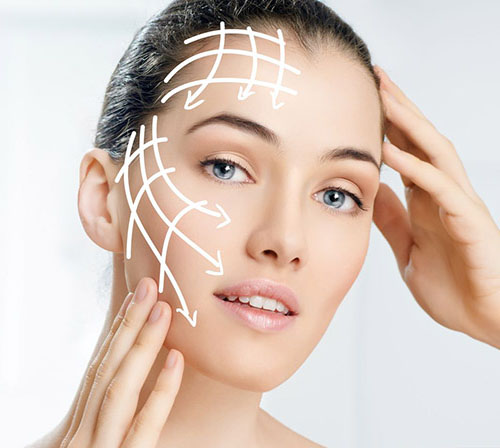 So we’ve established that your skin will naturally age, and how. We’ve also detailed some of the most common things that lead to more drastic (or premature) symptoms of aging in skin. That brings us to the most popular solution for aging skin: anti-aging creams.
So we’ve established that your skin will naturally age, and how. We’ve also detailed some of the most common things that lead to more drastic (or premature) symptoms of aging in skin. That brings us to the most popular solution for aging skin: anti-aging creams.
Anti-aging creams often claim to do the same thing – make you look more youthful – but they don’t all do it in the same way. Almost all are moisturizer-based, and some focus on concealing the signs of aging, some are used as preventatives, and some claim to “fix” your skin and revert it back to an earlier (or more ideal) state.
There are lots (and we mean lots) of skincare products out there that promise to make you look younger, but not all of them are equally good.
The fact is that “looking older” is something that bothers a lot of us. Not looking young and vibrant as we once did can make us feel vulnerable, inadequate, unattractive, and make us lose confidence and self-esteem. Skincare companies know this and they use it to their advantage, often making promises and using specific language designed to appeal to this very basic desire to look attractive and to avoid looking unattractive.
That’s why you need to be on your guard. That’s why it’s important to know what’s being sold to you and what you should look out for, so that you don’t end up buying something that doesn’t work. That’s what this guide is for.
We should mention of course, there isn’t anything wrong with showing the signs of age. There’s nothing embarrassing or wrong with having wrinkles, sags, and dryness in the skin. However, some people want to look as youthful as they can, whether for their own health, their own peace of mind, or the approval of others, and that’s fine too. Either way, it’s good to know what your options are, and what you should look out for. Below we have listed some of the most common types of anti-aging creams that you’ll find on the market, as well as their pros and cons.
Type One: Maintenance Creams
This type of anti-aging cream is by far the biggest, most common, and widespread that we’ve come across. Lots of different brands and products fall under this umbrella. We define these types of creams as ones that mainly intend to supplement your skin’s natural healing and protective qualities by giving it ingredients and extracts that it needs to do its job right. It includes products which momentarily solve your skin’s biggest problems by introducing new ingredients into your skin, and have to be reapplied regularly.
This type of cream can be found almost anywhere, and depending on the quality and the branding, you can expect to pay anywhere from $10 to $300 and up (in some cases, as much as $1000!). Somewhere in between, there in that range of prices and qualities, you’re sure to find something that works both for your personal skin and your pocketbook.
Let’s take a look at some of the most common ingredients used in this type of cream.
How do they work?
These types of creams typically work by introducing ingredients into your skin for the purpose of keeping it hydrated, filling in wrinkles, and giving it the nutrients it needs to protect and repair itself. Like all anti-aging creams they typically contain ingredients that help keep moisture in your skin (like glycerin and paraffin), but they also generally contain one of the following ingredients for added benefits:
Resveratrol: This is what’s known as a “phenol,” chemical compounds that are produced in some plants as a reaction to external damage like UV radiation, infections, or environmental stress. As a supplement it’s supposed to work as an antioxidant, meaning it eliminates free radicals in the body and prevents the oxidation of cells – which leads to their deterioration and death – keeping cells healthier longer. With your skin cells’ health protected, this ingredient is supposed to make sure your skin is getting all the help it needs in the fight against deterioration.
Vitamin C: A common vitamin and one that’s crucial to excellent skin health. When specifically in the form of ascorbic acid, vitamin C can help to even out skin tone, make skin firmer (which reduces drooping and sagging). And, like resveratrol, it works as an antioxidant, maintaining optimal cellular health for better skin health overall.
Hyaluronic acid: A natural component of the skin. Despite the name, this ingredient isn’t really an “acid” as we know the term, but rather a polysaccharide that attracts moisture. It’s a fluid found in many part of the body, including soft tissues and synovial fluid, which acts as a natural lubricant. How does it help the skin? First, it helps by attracting moisture to the skin, maintaining a health amount of water that keeps skin from drying out and helps it to look healthy and young. It can also help to “plump” the skin, filling out wrinkles and thin sections, keeping the appearance of the skin healthy, vibrant, and full.
Problems
While some of the ingredients and science behind this type of cream can be solid and worth looking at, sometimes these types of products end up not being the best for your health. Many of them contain ingredients like paraffins, petroleum jelly, or petrolatum – derivatives of petroleum that are supposed to act as a potent way to keep moisture in the skin. In one sense, it’s true that they really keep moisture in – because they’re not letting anything out. The truth is that these ingredients block the skin, preventing anything from getting in and anything from getting out. This can lead to blocked pores, which can pose more problems for your skin’s appearance. They can also irritate the skin, causing rashes and blisters in people who are sensitive to these types of ingredients.
As with all products, you need to make sure you’re always keeping an eye out for the ingredients. There are things you’ll have to look for, but an equal amount of ingredients to be wary of. Always read the label.
Type Two: Acidic Creams
This type of cream also claims to have anti-aging properties, but it works totally differently from the above type of cream. Instead of adding anything to your skin, this type of product intends to take away from your skin in order to make it look better, more youthful, and more vibrant. This type of cream is also fairly common, but doesn’t appear to be as popular as the above-described “maintenance” creams.
These creams can also range in price, and you can find such products for as low as $10 to $15 – although that price can go up significantly depending on who you buy from.
How do they work?
Your skin has two main sections: on top is the epidermis, and beneath it is the dermis. The epidermis often contains dead cells and poorly-keratinized skin. These acidic creams, containing alpha hydroxy acids (AHAs), help to clear away these dead skin cells and exfoliate the skin, allowing newer, healthier skin cells to come to the surface. They can also help the process of keratinization, the process of creating keratin – an important part of the skin that helps keep it strong. Brands refer to these processes as “rejuvenating” your skin and “increasing cell turnover.”
These types of creams are typically lower in strength than what you would find with a chemical peel, which is technically very similar and is aimed at producing the same types of results. Acidic creams are meant to be weaker and thus safer to use long-term.
There are numerous types of alpha hydroxy acids. They include lactic acid, glycolic acid, and citric acid.
Problems
The problem with putting anything acidic on your face is, of course, the fact that there can be side effects for those who are more sensitive. While AHAs are technically considered “safe” by the FDA, people are warned not to use more than the recommended dosage. The result can be skin redness, skin peeling, blistering, and skin discoloration. They can also cause an increase in sensitivity to the sun, so you should be sure to watch out for your direct sun exposure while using this type of product.
These are similar to the sorts of problems you can get from chemical peels, although of course depending on the strength of the acid being used, you can expect more extreme or less extreme potential side effects. Side effects will also depend on the individual, as some people are more susceptible to skin irritation than others, something they can’t necessarily control.
It’s not for everyone, but the process behind it is fairly sound, and as long as you’re safe about it, there are no major problems to worry about.
Type Three: Rejuvenating Creams
This is the most recent type of anti-aging cream that we’ve come across, and they profess to use the principles of cutting-edge sciences to make your skin look its best. These types of creams, like the previous ones, will of course promise to moisturize and hydrate your skin (as they should) but what sets them apart is the process and ingredients by which they claim to make your skin healthier and younger-looking.
These products can be a little pricier in general than the above-listed creams. One of the lowest-cost ones we’ve seen, Kremotex, can be had for $66.65 – although that price gets you a lot of usage. Other products can quickly climb into the hundreds of dollars, so you’ll need to make sure you do your research to make sure you find the best deal.
How do they work?
These products claim to work by stimulating your skin cells themselves, using newly-developed techniques that help your skin stay healthy and youthful from the cellular level up. Unlike maintenance creams they don’t merely claim to give your skin the additional support and moisture-retaining qualities it needs, and unlike acidic creams it doesn’t primarily claim to clear away dead skin in order to reveal newer skin cells beneath.
There are two main ingredients used for this type of cream:
Apple stem cells: Yes, you read that right. Stem cells derived from a specific type of apple have been shown to have an effect in stimulating human skin cell generation. The idea is that when you get older, your epidermal cells start to deteriorate, and the skin cells you’re left with aren’t working at their healthiest level. Stem cells, as you may know, take the form of different types of cells. Swiss apples were found to have stem cells that promote the creation of new human skin cells. The result is that these new cells, undamaged by natural degeneration commanded by their genes and by other things like ultraviolet light, can proliferate with abandon, leading to healthier skin that’s more able to take care of itself.
Epidermal growth factor: This is a substance that “tells” the body to create new epidermal (skin) cells. Growth factors, which can be proteins or hormones, typically abound during all times in an organism’s life, and is a crucial part of our biological cycle. Without growth factor, our bodies wouldn’t know which cells to keep making and which to limit the making of. Epidermal growth factor specifically deals with skin cells – the more new skin cells your body is commanded to make, the stronger and healthier your skin can be. It’s also supposed to support collagen formation, which leads to healthier and stronger appearance of the skin.
Problems
While these very scientific-sounding approaches may sound miraculous, the truth is that in come cases the science is still out. While epidermal growth factor sounds like a fantastic substance that could literally change your skin, the truth is that the evidence of its cosmetic effects is sort of weak.
Some studies claim that it increases collagen production, others say it increases fibroblast production (a cell that promotes collagen production). In the medical community it’s mainly used as a way to help wounds heal faster, as collagen is a crucial factor in skin regeneration in wounds. However, its purported benefits as a way to promote everyday skin health are less studied, and have less science behind them.
The problem with creams that use apple stem cells is that they’re not very common. Few creams seem to have latched onto the idea, making them hard to find. Some can be a little pricey, which has to do with how rare they are, but not all are.
Phytoceramides
One ingredient we haven’t discussed is the phytoceramide. What is it? Well, ceramides themselves are “lipids” in the skin that help it keep its shape and keep it free of wrinkles and spots. These are naturally-occurring in the body. Phytoceramides, on the other hand, are derived from plants, and can be ingested orally through supplements.
Our skin’s ceramides deteriorate as we age, leaving our skin less able to keep itself unwrinkled, and leaving it open to allergens and skin diseases. Phytoceramides, taken as a supplement, are supposed to be able to travel to the skin and take their place in the skin’s apparatus, taking their place alongside the ceramides in our skin and thus helping in the processes that ceramides are a part of: keeping our skin strong, healthy, and preventing wrinkles.
Supplements that contain phytoceramides, such as Phytotrinol, can be taken alongside regular anti-aging creams for better results than by using creams alone.
Creams vs plastic surgery
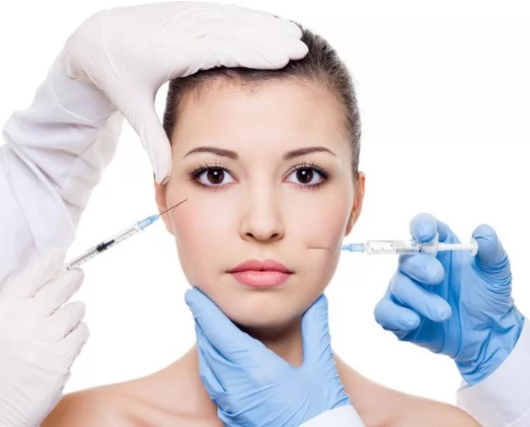 While anti-aging creams are very commonplace, there are plenty of people who have had plastic surgery done to attempt to get the same end result: younger, better-looking skin.
While anti-aging creams are very commonplace, there are plenty of people who have had plastic surgery done to attempt to get the same end result: younger, better-looking skin.
While creams promise to help our skin’s natural processes and supplement it with ingredients that can help offset and avoid the problems that cause skin to age, plastic surgery is a whole other beast. Plastic surgery for making the skin look “less old” commonly take the following two forms:
Laser resurfacing: Also called lasabrasion, this is where the plastic surgeon uses a pulsing laser beam to remove skin cells layer by layer, until spots and wrinkles are less visible. While it can be effective, this type of treatment can be expensive, take a lot of preparation for, and can require a long recovery time – up to two weeks, in some cases.
Face lift (rhytidectomy): This classic cosmetic surgery technique is one of the oldest and is still around today. Typically it involves removing some of the skin on the face, head, or neck area, leaving the remaining skin looking “tighter” and thus eliminating saggy skin and prominent wrinkles. It can also include surgically tightening the muscles of the face and neck. While this type of treatment can produce a dramatic difference in looks, there are numerous drawbacks which include high costs and possible complications during or after surgery. It’s also permanent.
Creams vs injections
Creams must generally be applied on a daily basis in order to work as advertised, and the effects they deliver might not be as dramatic as some people want. So besides plastic surgery, what other major option is there? Injections. These are less invasive than plastic surgery, and can have immediate effects with little recovery time. Many actors you see onscreen, male and female, have had this done.
There are two major kinds of injections:
Botulinum toxin (Botox): This is a “neurotoxic protein” that causes the partial paralysis of muscles under the skin. The resulting looseness of these muscles makes the skin above appear smoother, reducing or eliminating the visibility of wrinkles. There are a few downsides to this treatment. First, it’s not permanent: after the muscles regain their function, you need to go back and get it done again. Second, if your medical professional injects it incorrectly, you can end up paralyzing part of your face. Botulinum is a lethal toxin in higher doses, so you have to be very very careful around it.
Hyaluronic acid: While hyaluronic acid can also be applied topically, it’s also used as an injectable. This fluid “fills up” parts of the skin that are wrinkled or sagging, leading to a tighter and fuller (read: younger) appearance. There are some possible problems that can come with getting this done, however. Nerves and blood vessels can end up getting severed, and sometimes severe inflammation can result, with the body perceiving the hyaluronic acid as a threatening “foreign body” it has to eliminate. This is a problem that you can have with almost any injection, however, and doesn’t appear to be specifically relegated to hyaluronic acid.
Other ways to keep skin looking great
There are many cosmetic ways you can try and use to help keep your skin looking healthy and young, but you can also use some small lifestyle adjustments that can help you just as well. Your skin is a part of your body, and the health of one can determine the health of the other. What are these extra tips?
Stay hydrated
How many thousands of times have you heard this in your life? Well, there’s a reason it’s promoted by every medical professional, fitness guru, and nutritionist: it helps everything. From getting over sicknesses to getting more energy, staying hydrated helps it all. Our body needs water to work, and that includes our skin. With proper hydration, our skin gets the moisture it needs to keep from drying out and getting cracked. Drier skin can wrinkle too, so more water in your system can equal fewer wrinkles over time.
Eat right
Another platitude we hear all the time, but one we don’t always listen to. It may sound old-hat, but it happens to be one of the best ways to stay healthy, and that includes our skin. By getting enough nutrients, like vitamins and minerals, our cells get the fuel they need to work optimally. Vitamin C is particularly important for the skin, so the richer and healthier your diet is, the better your skin is likely to be. Greasy foods can lead to our skin breaking out, and so cutting those out can prevent that from happening as often.
Not too much sun
You might remember earlier in the article when we talked about the sun as both a good and a bad thing. It helps you produce vitamin D and can improve your sense of wellbeing, but too many UVA rays from the sun can damage your skin at the genetic level, leading to wrinkles, hardened skin, and damaged elastin and collagen. Making sure you don’t stay in the sun for too long, and making sure you’ve got plenty of sunblock on, means you won’t have to worry about the sun damaging your skin while you frolic in the garden, at the beach, or even just out on the street on your way to work.
Moisturizers
Moisturizers can help keep your skin in good enough shape, and can postpone or mitigate the physical effects of aging. By keeping your skin healthy and hydrated with quality moisturizers, your skin will have the tools it needs to repair and protect itself. By preserving your skin now, you’re keeping it in better shape for later, and that can only help you.
The main thing to keep in mind with these products is that they contain healthy, proven ingredients, and that they don’t contain artificial ingredients like paraffin or petrolatum that can harm your skin and clog your pores. You don’t want to put any obstacles in the way of the product, and sometimes even “legit” products contain ingredients like that that can take you a step backwards even as it promises to improve your appearance.
Conclusion
As you can see, the world of skincare is a complex one. With so many different types of cream out there, it can be difficult to determine which one is right. That’s why we wanted to put together this handy guide, to give people a broad overview of what the world of anti-aging creams is like, what they can expect from certain products, and what the downsides can be to each.
If you choose to use an anti-aging cream, make sure it contains quality ingredients, and avoid products that contain ingredients that could potentially harm your skin or your health.
Many times, companies will try and sell you a product without fully telling you the science behind it, or exaggerating the science behind it. Having the right information makes you an active, powerful consumer, one who is practically impervious to lies, frauds, and misinformation that people will pass along as fact in an effort to get you to give them your money.
And don’t take our word for it. Do your own research, and make sure that you yourself are satisfied with what a product contains and what it promises. And we also shouldn’t forget to mention one of the most important things to do: make sure to look at customer reviews. Large numbers of positive customer reviews are a good way to tell broadly whether a product does what it promises or not. If a product seems to contain good ingredients, but has negative customer reviews, there’s probably something seriously wrong with it.
Left to our own devices, we don’t always know what to do or where to turn, which is why some companies are able to make a killing off our ignorance by selling us cheap products at high prices that don’t really do anything. Your health is the most important thing you have: if you are healthy, you are capable, and if you are capable, you can survive and prosper. The millionaire who can’t leave his bed is more pitiful than a pauper in the prime of health.
That’s why if you choose to try an anti-aging product for your skin, make sure you choose only the very best, and the very safest.

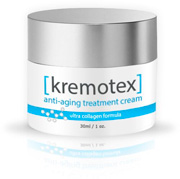
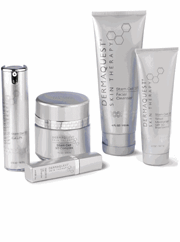
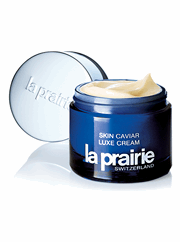
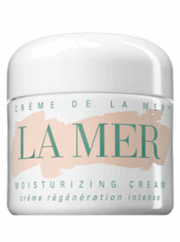
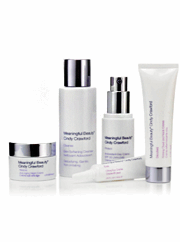
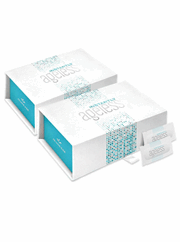
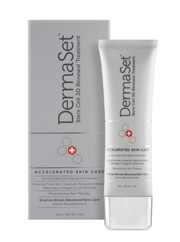
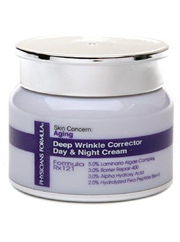
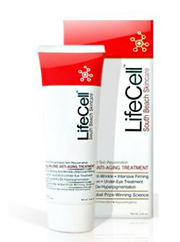
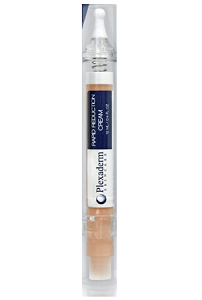
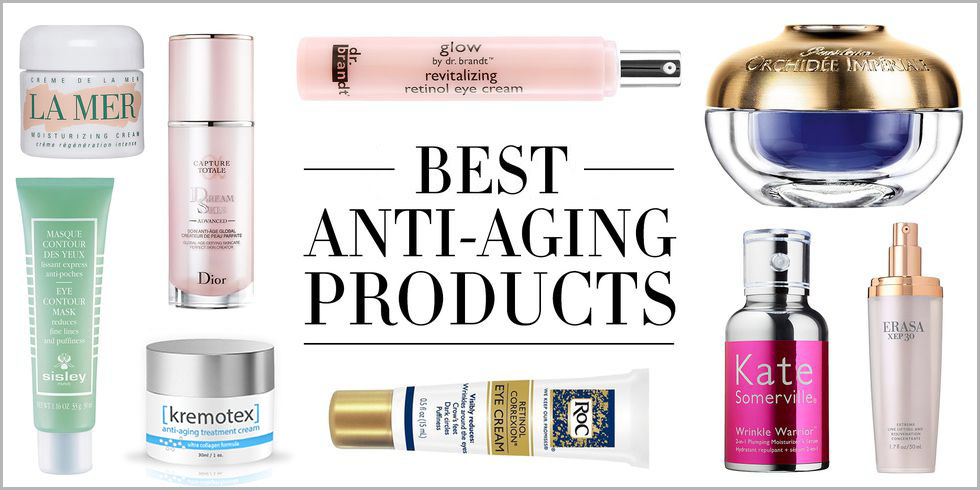
Do you know anything about “SHISEIDO” eye creams, face creams and their all their facial prouducts? I never heard any reviews or not even in the top 10 best anti-age creams. Yet in the high end dept stores it’s a big seller? Thank you please send a reply on this.
Been using Mary Kay skincare 40 yrs now. People can’t believe I’m 80.
This was really a great informative bit of information for me. It explains things that were kind of vague before. Thank you for putting the time in to get this information out to the public.
I’ve been using a product called Cosmedique for a while now and I think people should take a look at this product. I use this product as my all in one product and it removed the bumps in my chin area and the circles under my eyes. I tried the 15 days trial and was very happy with the product. Although the product is quite pricey I was able to get a discount on the first product that I received.
I agree getting on the phone to talk with a customer support takes a lot of time but I find communicating with them through email to be faster.
I’m very happy with the product and I can see my skin improving, the only problem for me is the price.
which face creams are the best, for aging skin?
What about collagen in pill form or liquid? Does it provide noticeable results?
Shiseido is very thick and globby and doesn’t not have the best ingredients
Monsia is my preference.
Great tips on options and skin management. I want to know if a person with diabetes can use Botox injections?
Bags under the eyes do not seem to be addressed too often. Can they be
diminished or made faint? If so, how long does it take? What do you use?
Very informative article
Been using Retin A prescribed by a dermatologist for many years for a skin condition and have been told I have few wrinkles. Still want something for lines around mouth
Any suggestions?
What do u think about crepe Erase I purchased it I not sure it not cheap
I love the 90 sec eye wrinkle reducer, I’m Trying to order a supply, Can’t find on order page where to enter my credit card #, please send me directions in an email so I can place my order. Thank You Phyllis
I’m questioning the validity of a product, Aviqua. I made a trial purchase on May 26, 2020 @ 12:38 PDT, AM. I don’t remember the sale but my credit card company obtained the invoice that shows I presumably purchased a trial jar @ $4.95 plus $95.21 plus $95.21 all in one night. I don’t have any products with the name of Aviqua nor ESKSKINSERUM. Are these two names the same company? And are these products sold online through a clearinghouse? I’m disputing the amounts on my credit card, but I do know that ‘certain’ companies have been hijacking legit orders from real companies and when you call to cancel you are told that this phone number Is a clearinghouse. Hopefully you will be able to clear this snafu for me. Thank you
Very informative article, I enjoyed reading it. Thanks!